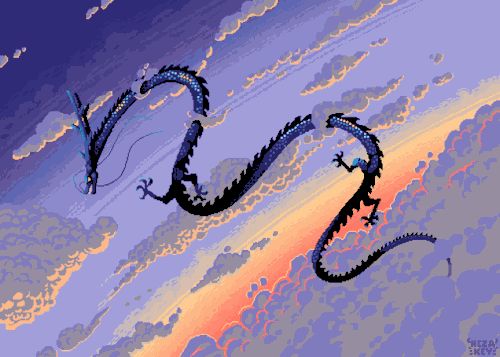Visualizations Like This Are So Cool! It's Always A Blast To See The Inner Workings Of How Things Like
Visualizations like this are so cool! It's always a blast to see the inner workings of how things like this come to life.

The Structure
South Korean drawing teacher An Jae Hyun (안재현) will clearly show you how to feel and correctly depict the structure of an object. This will help you learn and improve your drawing skills.









More Posts from Gatortavern and Others

This seems like something everyone should know if they’re in the sciences and/or interested in reading scientific papers.
"Decrease the increase" is actually a completely reasonable thing to say, but it feels like it shouldn't be.
some amazing art by Kevin Hong! I love the way the dragons are drawn!





Kevin Hong - http://www.kevinhong.com - https://www.behance.net/K141? - https://twitter.com/Taijuey - http://taijuey.deviantart.com/?rnrd=194005 - http://k141.tumblr.com/tagged/k141 - https://www.instagram.com/kevinhongart

Young American Alligators Can Regrow Their Tails, Study Shows
http://www.sci-news.com/biology/young-american-alligators-can-regrow-their-tails-09084.html
abandonware should be public domain. force companies to actively support and provide products if they don't wanna lose the rights to them

Before the bottom of chapter 3 page 34 reveals that he saw Isaac use his weather powers, you can see him go from his earlier position staring at nothing in particular to focusing on Isaac! Zack's little details are such a nice touch.


Reminder: He was not unconscious. He was just laying there silently.
How do you set a scene without overusing visual descriptions?
Practical Tips to Show, Don’t Tell
Show, don’t tell is probably the most common writing advice any author will ever receive. Instead of explicitly telling readers what is happening or how characters are feeling, showing allows them to experience the story firsthand. It’s good advice, and important for writers to take to heart, but sometimes it can be difficult to get the balance right. Here are some practical tips to show, don’t tell:
Set the scene
To really immerse your readers in your story, you want them to feel as if they’re in it – experiencing the world you’ve built. By writing about how characters perceive and interact with their surroundings, you’ll draw your readers in.
Examples:
Telling: It was winter, and the water was cold.
Showing: I hunched my shoulders up, burrowing deeper into my coat as my heavy boots crunched through the thin ice forming at the water’s edge.
Keep up the pace
Excess scene description will almost always bring your narrative pacing to a screeching halt. Instead of describing the scene every time, describe your characters’ actions within it.
Examples:
Telling: The lake was frozen and the trees were covered in snow.
Showing: My heart pounded as I almost lost my balance on the ice beneath my feet. I ducked and weaved my way home, dodging the snow that the howling wind shook loose from the treetops above me.
Keep your language descriptive, but simple
When it comes to show, don’t tell, it can be easy to fall into the trap of over-describing. Language that is too flowery or over the top can be just as bad as telling. You want to set a scene, not explain it to death.
Examples:
Too much: The azure-blue lake glinted like diamonds under a glittering sun that shone like a lightbulb in the darkness.
Just right: The sun reflected off the ice brightly, highlighting the deep blue of the water beneath it.
Create a sense of character
The way a character speaks and acts can be the perfect way to show your readers who they are and set a scene without over-describing it. For example, you can use body language, like gestures and posture to reveal a character’s emotions or attitude in a way you can’t reveal by simply describing the scene. Sometimes an intricate description of the location is not as important as how the character feels in the moment
Examples:
Telling: The room was the same as he remembered as a child, with its red carpets, brown-papered walls, high ceilings, and huge wooden table propped in front of large bay windows. It made him anxious.
Showing: He shuffled anxiously to the table overlooking the garden, his mind heavy with the weight of childhood memories.
This is morbid, but it's also really cool. The Timeless Journey of the Mind (and the rest of the skull)™
Decapitated Stone Age woman's head rolled into a cave in Italy

Following her death about 5,600 years ago, a Stone Age woman’s skull took an unexpected journey when mud and water washed it away from her burial site and into the craggy rocks of a steep cave in what is now Italy, a new study finds.
When archaeologists found the skull, its resting spot in the cave shaft was so hard to reach that only one archaeologist, using rock climbing equipment, could squeeze into the space to recover it. During a later analysis, the researchers found that the skull was very scratched up; at first, they couldn’t make heads or tails of what had happened to the ancient woman.
But, after determining which of the skull’s lesions were likely caused by humans and which were likely incurred as the skull tumbled against various rocks, the researchers came up with a possible scenario. Once this woman died, people in her community likely dismembered her corpse — a funeral practice performed at other burials from this time period and region. Read more.
What a wonderful piece of art! Check out the artist for more of their cool stuff! Pixel art is always fantastic to see.

I wanted to work on a little bit of pixel art, because I haven’t touched the stuff in awhile.
-
 artking-4 reblogged this · 2 months ago
artking-4 reblogged this · 2 months ago -
 mariofrancisdsa liked this · 3 months ago
mariofrancisdsa liked this · 3 months ago -
 scp4268 liked this · 6 months ago
scp4268 liked this · 6 months ago -
 sumya12345 liked this · 6 months ago
sumya12345 liked this · 6 months ago -
 creativetips-collection reblogged this · 6 months ago
creativetips-collection reblogged this · 6 months ago -
 starlikesilences reblogged this · 7 months ago
starlikesilences reblogged this · 7 months ago -
 quitschekaetzchendebugging liked this · 8 months ago
quitschekaetzchendebugging liked this · 8 months ago -
 si11y-geck0 liked this · 10 months ago
si11y-geck0 liked this · 10 months ago -
 ravenaveira liked this · 10 months ago
ravenaveira liked this · 10 months ago -
 connans-blog liked this · 11 months ago
connans-blog liked this · 11 months ago -
 liberty1776 liked this · 1 year ago
liberty1776 liked this · 1 year ago -
 weird-is-all-ive-got reblogged this · 1 year ago
weird-is-all-ive-got reblogged this · 1 year ago -
 lin0us liked this · 1 year ago
lin0us liked this · 1 year ago -
 writeashwrite reblogged this · 1 year ago
writeashwrite reblogged this · 1 year ago -
 chinchillinator reblogged this · 1 year ago
chinchillinator reblogged this · 1 year ago -
 weird-is-all-ive-got reblogged this · 1 year ago
weird-is-all-ive-got reblogged this · 1 year ago -
 mr-fucko liked this · 1 year ago
mr-fucko liked this · 1 year ago -
 beanieduzartz liked this · 1 year ago
beanieduzartz liked this · 1 year ago -
 aquila-stardust reblogged this · 1 year ago
aquila-stardust reblogged this · 1 year ago -
 trans-ceiver liked this · 1 year ago
trans-ceiver liked this · 1 year ago -
 tetrazeta-space reblogged this · 1 year ago
tetrazeta-space reblogged this · 1 year ago -
 levaminos reblogged this · 1 year ago
levaminos reblogged this · 1 year ago -
 ultramarinestitches liked this · 1 year ago
ultramarinestitches liked this · 1 year ago -
 m1sosazai liked this · 1 year ago
m1sosazai liked this · 1 year ago -
 primordialshrieking reblogged this · 1 year ago
primordialshrieking reblogged this · 1 year ago -
 sunsounds liked this · 1 year ago
sunsounds liked this · 1 year ago -
 eliocentrico liked this · 1 year ago
eliocentrico liked this · 1 year ago -
 starlikesilences liked this · 1 year ago
starlikesilences liked this · 1 year ago -
 sweetshadow91 reblogged this · 1 year ago
sweetshadow91 reblogged this · 1 year ago -
 sweetshadow91 liked this · 1 year ago
sweetshadow91 liked this · 1 year ago -
 catboy-balls liked this · 1 year ago
catboy-balls liked this · 1 year ago -
 vapis-10 reblogged this · 1 year ago
vapis-10 reblogged this · 1 year ago -
 cinn-sanity reblogged this · 1 year ago
cinn-sanity reblogged this · 1 year ago -
 cinn-sanity liked this · 1 year ago
cinn-sanity liked this · 1 year ago -
 pipsbadgerboots reblogged this · 1 year ago
pipsbadgerboots reblogged this · 1 year ago -
 the-phoenix-heart reblogged this · 1 year ago
the-phoenix-heart reblogged this · 1 year ago -
 the-phoenix-heart liked this · 1 year ago
the-phoenix-heart liked this · 1 year ago -
 dexjettster liked this · 1 year ago
dexjettster liked this · 1 year ago -
 levaminos liked this · 1 year ago
levaminos liked this · 1 year ago -
 collectedwisdom reblogged this · 1 year ago
collectedwisdom reblogged this · 1 year ago -
 mesoluna liked this · 1 year ago
mesoluna liked this · 1 year ago -
 weird-is-all-ive-got liked this · 1 year ago
weird-is-all-ive-got liked this · 1 year ago -
 softgothvibes reblogged this · 1 year ago
softgothvibes reblogged this · 1 year ago -
 softgothvibes liked this · 1 year ago
softgothvibes liked this · 1 year ago -
 cozy-possum reblogged this · 1 year ago
cozy-possum reblogged this · 1 year ago -
 plentyquinces liked this · 1 year ago
plentyquinces liked this · 1 year ago -
 blueorangemusic liked this · 1 year ago
blueorangemusic liked this · 1 year ago -
 iceberg-hootenanny reblogged this · 1 year ago
iceberg-hootenanny reblogged this · 1 year ago

A Cozy Cabana for Crocodiles, Alligators and their ancestors. -fan of the webcomic Paranatural, Pokemon, Hideo Kojima titles -updates/posts infrequently
237 posts
